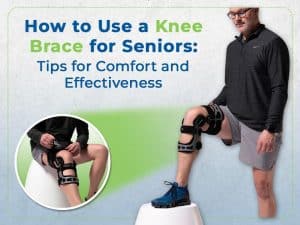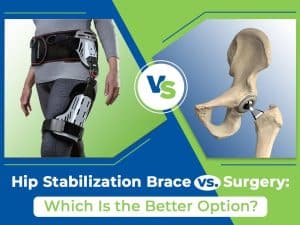A sprained ankle is a common injury that can happen to anyone, from athletes to everyday individuals. It occurs when the ligaments in the ankle are stretched or torn, resulting in pain, swelling, and limited mobility. While a sprained ankle can be frustrating and hinder your daily activities, the good news is that you can recover and get back on your feet with the right approach and proper care. This article will guide you through the process of recovering from a sprained ankle, providing you with effective strategies, exercises, and tips to regain mobility and return to your active lifestyle.
Understanding a Sprained Ankle
Before diving into the recovery process, it’s essential to understand the nature of a sprained ankle. A sprain typically occurs when the foot twists or rolls inward, causing stress on the ligaments on the outer side of the ankle. The severity of a sprained ankle can vary, ranging from mild to severe, depending on the extent of ligament damage. It is crucial to assess the severity of your sprained ankle, as it will determine the appropriate treatment approach and recovery timeline.
Initial Treatment and Management
When you first sprain your ankle, it’s essential to initiate immediate treatment to minimize pain and swelling and prevent further damage. The R.I.C.E. method is commonly recommended for initial ankle sprain management:

Initial treatment
- Rest: Avoid putting weight on the affected ankle and give it time to heal. Use crutches or a brace to provide support and prevent further strain.
- Ice: Apply ice to the sprained ankle for 15-20 minutes every 2-3 hours to reduce swelling and inflammation. Wrap the ice pack in a thin cloth to protect the skin.
- Compression: Use an elastic bandage or compression wrap to apply gentle pressure to the ankle, which helps reduce swelling and provides support.
- Elevation: Elevate your ankle above heart level whenever possible to reduce swelling. Prop it up on pillows or use a footstool.
Rehabilitation and Recovery
Once the initial swelling and pain subside, it’s time to focus on rehabilitation and recovery. The goal is to regain strength, flexibility, and stability in the ankle joint. Here are some effective strategies and exercises to help you get back on your feet:
- Range of Motion Exercises: Begin with gentle ankle movements to improve flexibility and reduce stiffness. Perform ankle circles, ankle pumps, and alphabet exercises to encourage a full range of motion.
- Strengthening Exercises: As your ankle heals, it’s crucial to rebuild strength in the surrounding muscles. Perform exercises such as calf raises, ankle dorsiflexion and plantar flexion exercises, and lateral leg raises to strengthen the ankle and improve stability.
- Balance and Proprioception Training: Balance and proprioception (awareness of body position) may be compromised after a sprained ankle. Incorporate exercises that challenge your balance, such as standing on one leg or using a balance board, to improve stability and prevent future injuries.
- Gradual Weight-Bearing and Functional Activities: Gradually introduce weight-bearing activities once your ankle gains sufficient strength. Start with gentle walking, progressing to more functional activities like stair climbing, jumping, and lateral movements. Listen to your body and avoid pushing yourself too hard too soon.
- Physical Therapy: If you’re unsure about rehabilitation or need professional guidance, consider consulting with a physical therapist. They can provide a personalized treatment plan, hands-on techniques, and expert advice to aid in your ankle recovery.
Read More: Ankle Braces: Helping Seniors Prevent and Recover from Sprains and Strains
Tips for a Speedy Recovery
In addition to the exercises and rehabilitation strategies mentioned above, here are some tips to promote a speedy and successful recovery:
- Follow your healthcare professional’s advice: Consult with a healthcare professional, such as a doctor or physical therapist, for specific guidance tailored to your condition. They can provide valuable insights, monitor your progress, and adjust your treatment plan accordingly.
- Maintaining a healthy lifestyle: A nutritious diet and adequate hydration support healing. Include foods rich in vitamins and minerals, such as fruits, vegetables, lean proteins, and whole grains. Additionally, stay hydrated by drinking enough water throughout the day.
- Manage pain and swelling: Over-the-counter pain relievers, like acetaminophen or nonsteroidal anti-inflammatory drugs (NSAIDs), can help alleviate pain and reduce inflammation. However, consult your doctor before taking any medication to ensure it’s suitable for you.
- Gradually return to activities: While you may be eager to resume your normal activities, it’s important to do so gradually. Ease back into exercises and sports, paying attention to any discomfort or pain. Give your body time to adapt and rebuild strength.
- Use supportive devices: Depending on the severity of your sprained ankle, your doctor may recommend using a supportive device, such as an ankle brace or crutches, during the recovery period. These aids provide stability and protect the ankle while allowing for controlled movement.
- Warm-up and stretch: Before engaging in physical activity, warm up your body with light aerobic exercises and perform dynamic stretches targeting the ankle and surrounding muscles. This prepares your muscles and joints for movement and reduces re-injury risk.
- Avoid high-risk activities: During the recovery phase, avoiding activities that pose a high risk of re-injury, such as contact sports or intense physical activities with sudden movements, is crucial. Opt for low-impact exercises and gradually reintroduce more challenging activities as your ankle strengthens.
- Listen to your body: Pay attention to any pain, discomfort, or swelling during and after activities. If you experience persistent or worsening symptoms, consult your healthcare professional for further evaluation and guidance.
Using Ankle Braces for Support
Ankle braces can be a valuable tool in aiding recovery and providing stability to a sprained ankle. Here’s how you can effectively incorporate ankle braces into your healing journey:

Ankle braces for support after a sprained ankle.
- Consult with a healthcare professional: Before using an ankle brace, it’s essential to consult with a healthcare professional, such as a doctor or physical therapist. They can assess the severity of your sprained ankle and provide guidance on whether an ankle brace is necessary and which type would be most suitable for your specific situation.
- Choose the right type of ankle brace: There are various types of ankle braces available, including lace-up braces, elastic wraps, and rigid braces. The choice depends on the severity of your sprain and the level of support required. Lace-up braces provide a secure fit and adjustable compression, while elastic wraps offer flexibility and compression. Rigid braces provide maximum support and stability for severe sprains or during the initial stages of recovery. Your healthcare professional can help you determine the best option for your needs.
- Wear the ankle brace correctly: It’s crucial to wear the ankle brace properly to ensure optimal support. Follow the instructions provided with the brace and make sure it fits snugly but not too tight. Adjust any straps or closures to achieve a comfortable and secure fit. The ankle brace should provide stability to the injured ankle without impeding circulation or causing discomfort. It’s advisable to seek guidance from a healthcare professional on how to wear and adjust the brace properly.
- Gradually reduce reliance on the brace: While ankle braces can provide support during recovery, it’s important not to become overly reliant on them. As the ankle heals and gains strength, gradually reduce the dependence on the brace. This can be done under the guidance of a healthcare professional who can provide exercises and rehabilitation techniques to help strengthen the ankle muscles and improve stability.
- Combine with rehabilitation exercises: Ankle braces are most effective when used in conjunction with rehabilitation exercises. Physical therapy exercises can help restore range of motion, improve strength, and enhance proprioception (awareness of joint position). Your healthcare professional can create a customized exercise plan tailored to your specific needs and guide you through the rehabilitation process.
- Follow the recommended usage guidelines: Ankle braces should be worn according to the recommended usage guidelines provided by your healthcare professional. This may include wearing the brace during physical activities, such as walking, exercising, or participating in sports, to provide additional support and prevent re-injury. However, giving your ankle regular rest and allowing it to move naturally without the brace is important to prevent muscle weakness and stiffness.
By incorporating ankle braces into your recovery plan and following the recommended guidelines, you can get back on your feet with confidence and minimize the risk of re-injury. Remember, ankle braces are not a substitute for proper rehabilitation and medical advice. They are designed to complement the healing process and provide temporary support. Always consult a healthcare professional to determine the appropriate use of an ankle brace based on your specific condition and follow their guidance for a safe and effective recovery.
In Conclusion
Recovering from a sprained ankle requires patience, dedication, and a comprehensive approach. Following the appropriate initial treatment, engaging in rehabilitation exercises, and incorporating helpful tips can promote healing, regain mobility, and get back on your feet. Remember to consult a healthcare professional for personalized advice and guidance throughout the recovery process. With time, effort, and proper care, you’ll be able to overcome a sprained ankle and return to your active lifestyle with confidence.
Our orthopedic ankle braces are available in several presentations in case you need extra ankle support or have had a recent injury or surgery. Our products are made with the latest material technology and provide adjustable levels of support for any kind of medical need.
If you’re not sure what product is right for you or if you’re eligible for insurance coverage, Artik Medical Supply will provide the guidance you need. We can even communicate with your doctor to determine the best medical ankle brace for you. Contact us today for a free eligibility check.








